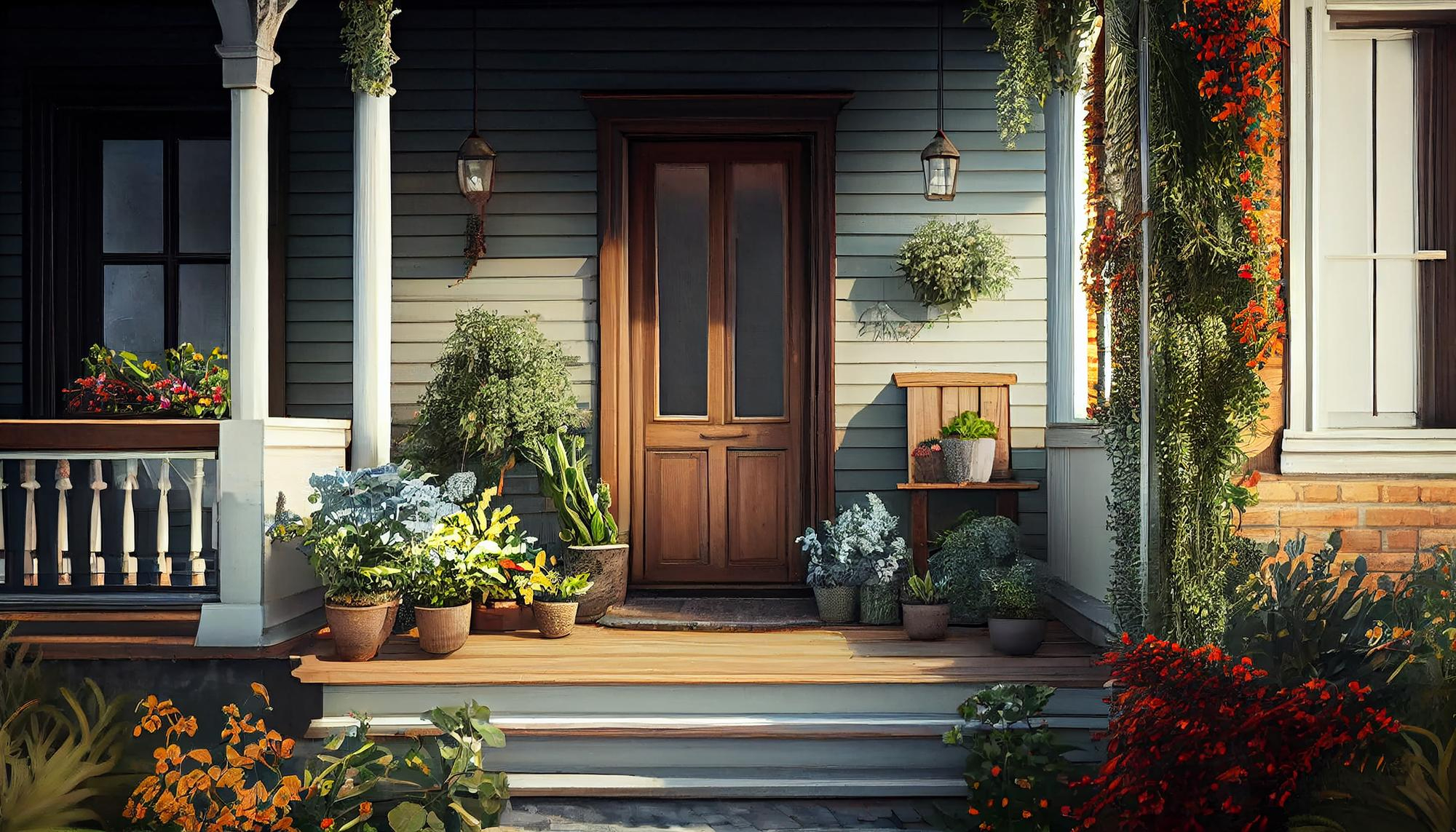Vastu Guidelines for Residential Properties - A Detailed Guide
The home-buying journey is a milestone we all dream of. Why not? Home is a place where memories are created, and the future is built. In the meantime, with the hectic lifestyle, humans’ need for harmony or peace is getting more obvious.
There comes “Vaastu Shastra”, which is well-linked to positive energy, peace, and prosperity. This comprehensive guide sheds light on the most fruitful Vastu guidelines for residential properties. However, if you’ve recently bought an under-construction property or want to design it from scratch, consider relying on these tips.
Why Vastu Matters in Modern Homes? A Glimpse into the Past
Modern lifestyle comes with a modern mentality. There is a debate around whether Vastu Shastra is a superstition or actually works. In the past, it originated around 3000 BC, as evidenced by the Rig Veda.
At that time, the house defender was conjured as Vastopati. There are numerous proofs of Vastu practices found in the Ramayan and the Mahabharat. Plus, the antiquated cities of Indraprastha and Dwarka were created following the Vastu principles.
In the contemporary era, many people started recognizing the importance of the interplay between the five natural elements: Earth, Water, Fire, Air, and Space, the pivot of Sun, Moon, and planets. Therefore, the five central standard elements for the home are:
1. The Doctrine of orientation (Diknirnaya),
2. Site Planning (Vaastu Purusha Mandala),
3. The approximate measurement of the building (Maana),
4. The six canons of Vedic architecture (Aayadi), and
5. The aesthetics of the building (Chanda).
Consider Relying on Vaastu-Purusha-Mandala (VPM)
The Vastu Purusha Mandala is a geometric grid representing the Vastu Purusha, a cosmic being that embodies the energy of a plot of land or building. Moreover, the Vaastu-Purusha-Mandala is one of the clearest models of the universe that reflects the basis for architectural design. It is the most important factor when it comes to the construction of buildings.
By rule, it is a square, which is the fundamental form of Hindu architecture. Therefore, the grid square form of Vaastu-Purusha can be created differently and transformed into a triangle, hexagon, octagon, and circle of equal area. For your reference, here is the personification of Vaastu Purusha:
- NE (Head) – Sensitive and Control Sun.
- N & E (Arms) – Active and Live.
- S & W (Legs) – Rest and Movement.
- SW (Feet) – Bath and Excretion.
- SE (Knee & Elbow) – Costume and Valuable.
- NW (Knee & Elbow) – Grains and Eatables.
- Centre (Navel) – O.T.S. and Plantation.
Spatial Arrangement of Home Layout According to Vastu Shastra
Directions are an important part of Vastu Shastra. One sun-based day's 24 hours are divided into eight parts, each of which corresponds to one of the eight cardinal directions. In each of these eight periods, the position of the Sun is situated in one of the cardinal directions.
The primary point of Vastu practices is to ensure beams of daylight are present in the house. However, each room should be situated in a way that it points toward the Sun.
Here is what an appropriate spatial arrangement for a home layout should look like according to ancient science philosophies:
| Spaces | Directional Arrangement |
|---|---|
| Bedroom | Since the human head acts as the North Pole and as the attraction of the inverse poles, the bedroom should be in the South. |
| W.C. | Place it in the South, Southwest. |
| Kitchen | Southeast, because the morning beams will sanitize and encourage the openness of the body to the morning sun. |
| Puja room/ Meditation room |
It should be placed in the Northeast because there is an existence of the electromagnetic properties of the Earth and the recuperating properties of the Sun. |
| Dining room | Provide in the West. |
| Veranda | It must be available to the sky in the middle; the veranda should be in the North and East. |
| Bathroom | It must be in the East, as it gets more hygienic due to the morning sun rays. |
| Study room | The ideal direction of study rooms is West and Southwest. |
| Drawing room |
It can go well in the North, Northwest, or Northeast direction. |
Vaastu Principles and Their Relevance to Today's Residence Practices
Balancing tradition with modern design is important for creating living spaces that seem grounded, balanced, vastu-compliant, and beneficial to daily life. That being said, understanding the logical explanation behind Vastu principles in today’s residential practices is worthwhile:
Site Selection (Bhu-Pariksha)
When selecting the site, go for a rectangular-shaped property with proper proportions. To attract positivity, the location of the chosen property should not be near the crematorium, temple, or any public place. The reasons behind these are: a rectangular property defines a good structural grid, and houses are away from crowded spots to avoid conflict in day-to-day life.
Site Planning (Padavinyasa)
After precise Bhu-Paiksha, it is time to address room positioning. As per Vastu Shastra, each room should be positioned in a way that it faces the Sun during daytime or when it is mostly occupied.
This is suggested because the Earth’s energy field and the eight directions are linked together to create an atmosphere advantageous to humans.
Architectural Aspect (Shala Nirupana)
Shala Nirupana deals with the form, shape, and dimensions of the property to ensure proportionality and symmetry. Height-to-Breadth ratio is of utmost importance for the pleasant aesthetic and proportions in modern design (more detailed guidelines for the same are given in Maana).
Ideally, the height-to-breadth ratio should be between 1.5 and 2, and the best ratio of length to width of the rectangle is 1.618 (also known as the golden ratio).
In contrast, the location of the borehole should be in the North-East or North-West direction. To align with the rest of the construction in the South-East direction, boring in the North-East or North-West direction won’t affect anything.
Construction Aspect
The construction of the property prescribes materials, timing (Muhurat), and various construction aspects. The direction of excavation is suggested to be from North-East to South-West (Return Monsoon). In addition, the North-East is generally kept lower than the South-West. This practice is prevalent to ensure the flow of light and wind.
Strength and Earthquake Safety
Vastu Shastra emphasizes the structural integrity, which translates today into earthquake resistance and structural safety. According to Vastu guidelines, the irregular shape of the building is prohibited.
Asymmetric construction of the property leads to twisting of the building under the lateral load effect. This is why it is preferred to have 9 divisions (3×3) in plan building because the equal span concept offers symmetry in plan.
The rest of the tips include:
- There shouldn’t be a large opening at the corners of the house.
- The building must be solidly hooked up to the ground.
- The column should not be at Nabhi Sthana of VPM.
- The shape of the column should be square or circular.
Engineers now use advanced simulations and building codes to ensure safety against natural disasters.
Lighting (Prakash)
Prakash, or natural lighting, is referred to as the key element of Vaastu because it promotes health and positivity. Vastu relies on sunlight for both physical and mental wellness as it is a natural purifier. Therefore, uniform distribution of light is suggested for a hall, together with the use of controlled lighting to illuminate focal areas in the lounge.
Cardinal Directions and Placements According to Vastu
In Vastu Shastra, each cardinal direction holds a unique energy and purpose. However, placement of rooms followed by cardinal directions can invite harmony, health, and prosperity within the home.
Below, one can find a quick referencing table highlighting the ideal placements according to Vastu principles:
| Direction | Placement |
|---|---|
| East Side | The Eastern side should be kept for the entrance, porch, admin, and study room. Plus, it should be kept at a lower level. |
| South-East Corner | Aagneyakona, or kitchen, is advised to be built in the South-east corner of the house. |
| South-West Corner | The master bedroom can be placed on the Southern side, along with the bathroom, placed in the southwest. |
| West Corner | The West corner is great for a dining room, walls, staircase, or garden, and should be at a higher level than other areas. |
| North-West Corner | The North-West corner of a home is for the dining room, food storage, animal shelter, toilet, or water feature, and should be built at a slightly elevated level. |
| North Corner | The Northern side of the house is best-suited for an entrance, living area, treasury, water pump, water storage, verandah, and staircase that must be kept at a lower level. |
| North East Corner | Towards the North-eastern end of the house, one can place a temple or a worship place. Plus, this direction is best for creating an underground water tank. |
| Central Area | The central area of the rooms, Brahmasthan, should be kept clutter-free. |
Final Words
In a nutshell, Vastu principles are not just mythological; they are based on various scientific reasons and logical explanations indeed. Counting on them can greatly impact the planning and construction of various structures, for good.
Surprisingly, its principles are compatible with modern residential practices. Be it for site selection, planning, construction, or arrangement, its framework not just contributes to the house's physical appearance, but also enhances the quality of life within it.
Hence, consider moving into the properties where tradition and innovation coexist.
Trending Posts
Related Blogs
How Vastu Shastra Can Enhance the Value of Your Faridabad Property
In today’s highly competitive real estate market, property owners are
Read More >>Best Cities for Property Investment in India 2026
Best Cities for Property Investment in India
India’s real estate
Do not get carried away by North, East or Northeast entrances and facings
The facing/entrance of a house is just one aspect to
Read More >>






.png)